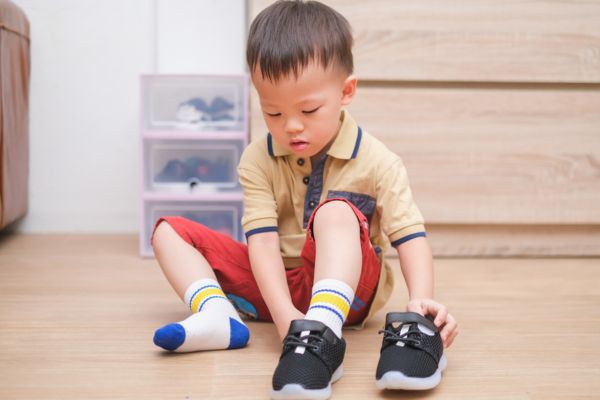
Power struggles are one of the most common behavior challenges in working with kids. Children are hard-wired to differentiate themselves from others around them and from a young age, explore their own power and independence. That exploration is a good thing, although it can feel like anything but when we’re in the middle of it all. You can have a big impact on helping kids develop and assert their independence by proactively giving kids the power they want in smaller, manageable doses. Here are some ideas of how.
Give them choices
Most of us give kids choices here and there throughout the day. However, when it comes to avoiding power struggles, proactively giving kids LOTS of choices is one of the most effective tools a caregiver has. Most of the time, we don’t even realize how many choices are available to offer throughout the day because we’re on auto-pilot. When we slow down and become more intentional, we’ll find opportunities everywhere (which can be harder than it sounds when you’re trying to manage multiple kids or stay on a schedule). For younger kids, you can use simple “choice 1 or choice 2” questions around what clothes to wear, what kind of cheese to have, or what toys to take outside. For older kids, you can use open choices around things they care about but aren’t too attached to, like weekly meal planning, what activities to do over the weekend, or what movie to watch for movie night. The more kids are able to make choices and have control throughout their everyday lives, the less their need for power will bubble over into battles with you.
Give them a voice in group decisions
Kids not only need to feel powerful independently, they need to feel powerful in groups. When that doesn’t happen in healthy ways, we see kids try to force it in unhealthy, ineffective ways. You can define group in any way you want. It could be just you and the child deciding things together, or it could be a larger group of kids deciding things on their own with you facilitating. As a group, you can make simple choices like what art project to do for the day to more complex choices like what are the rules for resolving conflicts between kids. Allowing children to have a voice in things that directly impact them helps them learn to work well with others and also helps them develop confidence, competence and self-worth.
Give them space to try
So often, kids are capable of so much more than we allow them to do. A lot of the time, it’s easier, faster and less scary if we do things for them; however, that limits their ability to test out their independence muscles. Kids need to repeatedly take an action before they can conquer it and move on to the next step. This process of trial and error is the way we all learn. You can give your child opportunities to be more independent by asking them to help you do something you’d normally do yourself, like set the table, feed the dog, or help a younger child with homework. Expand their current level of independence by allowing them to play in a space away from you, finish a project without a critique from you, or handle a problem on their own. Kids that are given safe, age-appropriate ways to grow their independence have fewer bouts of rebellion around this developmental need.
Throughout childhood, kids are learning to assert their independence. We can help our kids navigate these stages, from the toddler screaming “NO” to the teenager slamming the door to their room, by giving them lots of safe opportunities to develop and strengthen their independence muscles.